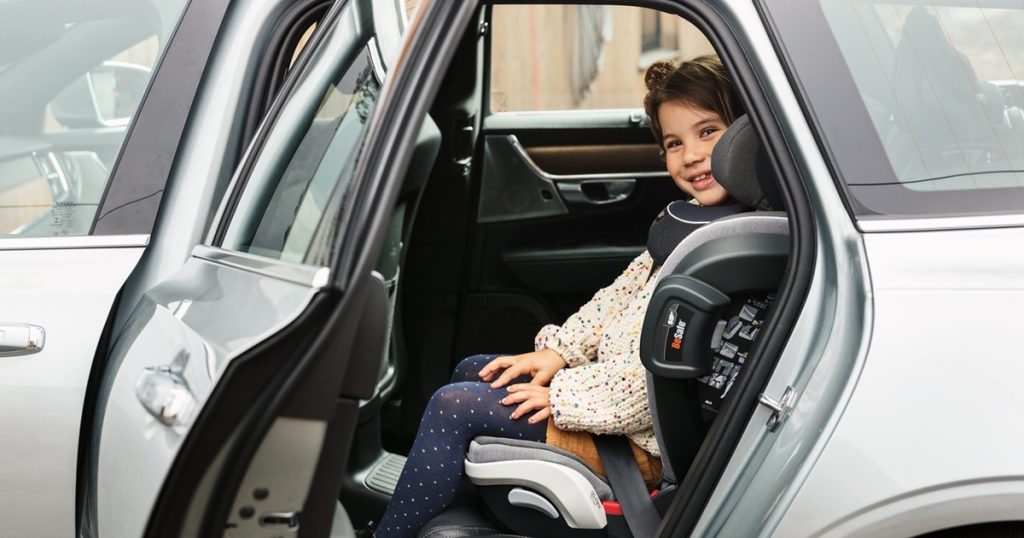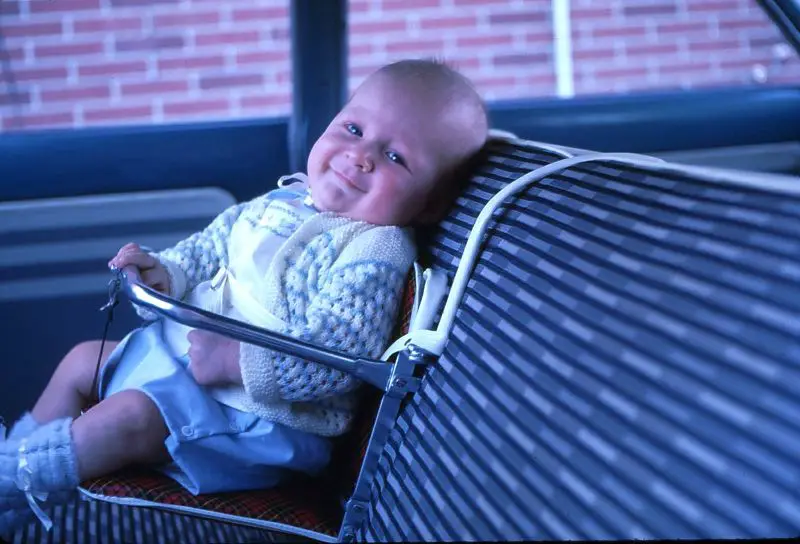Knowing when to switch to a booster seat from an infant car seat is key for both safety and following the law. Keeping your child safe in the car is extremely important.
Getting a handle on the different car seats and their age and weight rules can really make a difference in keeping your child safe while traveling. Infant car seats are for the little ones, while booster seats are for older kids who have outgrown their infant seats but aren’t quite ready for a regular seat belt. Understanding when to switch to booster seat timing can help ensure your child gets optimal protection. It’s a good idea to keep an eye on how your child is growing and to stay updated on the latest safety tips.
A lot of parents find it tricky to figure out the right time to make the switch. With all the guidelines and safety rules, it’s easy to feel a bit lost. This guide is here to help you make the change smoothly and confidently.
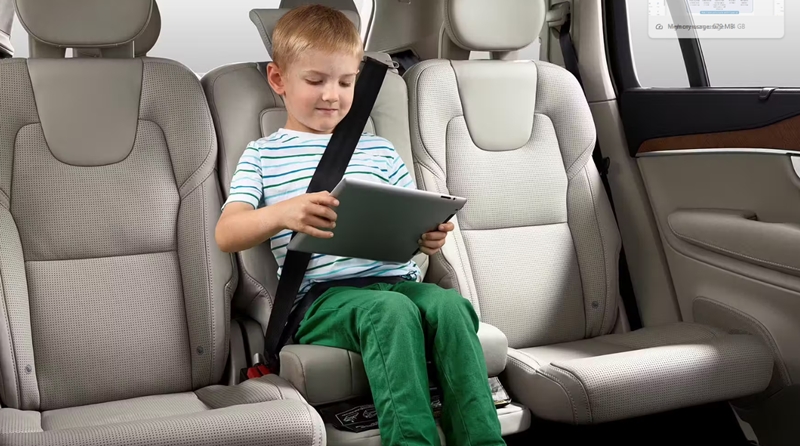
Table of Contents
Understanding the Difference Between Infant Car Seats and Booster Seats
What Is an Infant Car Seat?
Infant car seats are designed for newborns and little ones, and they’re rear-facing to give extra protection to their tiny heads, necks, and spines. These seats come with a harness system that snugly wraps around your baby. They’re meant for babies who weigh between 4 and 35 pounds and are under 40 inches tall. You’ll need to use these seats until your baby hits the weight or height limit set by the manufacturer.
Many infant car seats offer convenient features like removable bases for easy car-to-car transfers, carry handles for portability, and compatibility with stroller systems. Understanding when to switch to booster seat timing becomes important as your child approaches the upper limits of their infant car seat.
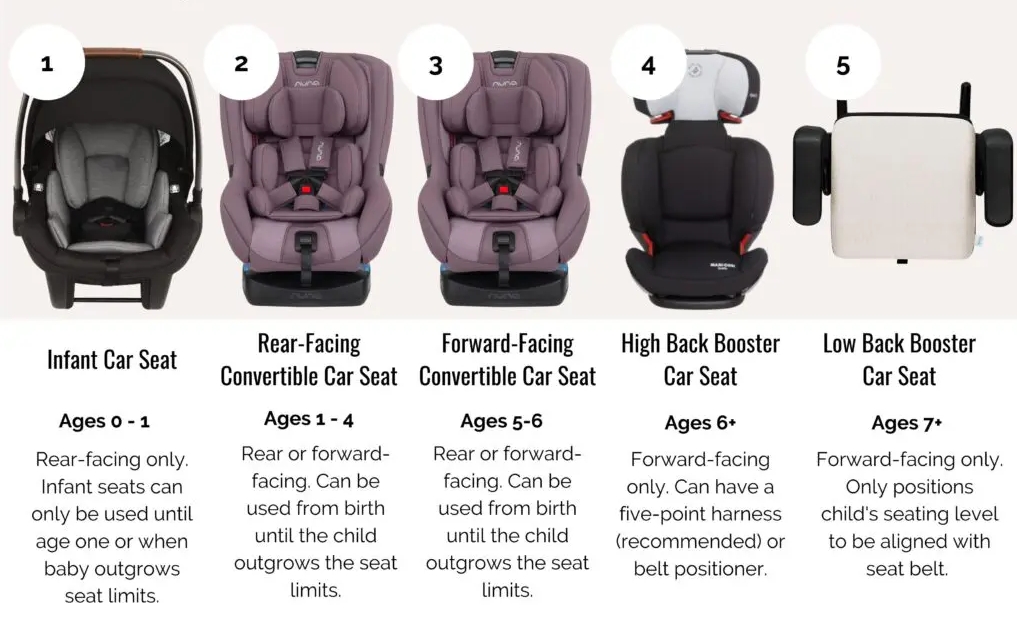
What Is a Booster Seat?
Booster seats are made for older children who have outgrown their infant car seats. These seats help position the vehicle’s seat belt correctly across their body. There are two main types: belt-positioning boosters and high-back seats. These seats are best suited for children who weigh at least 40 pounds and are around 4 years old or older.
Booster seats elevate the child to a height where the vehicle’s seat belt can effectively restrain them in the event of a collision. Parents should ensure their child remains in a booster seat until they reach the recommended height and weight limits, typically until ages 4-8 or until they can safely use the vehicle’s seat belt alone. Knowing when to switch to booster seat guidelines and following them properly not only complies with safety regulations but also significantly reduces the risk of injury in accidents.
Why Proper Transition Matters From Infant Car Seat to Booster Seat
Switching at the right time adds an extra layer of safety. It ensures the seat belt fits correctly, which greatly lowers injury risk during a crash. Using the right seat for your child’s size and age can prevent tragedy and meet legal standards.
Importance of Proper Seat Selection
Picking the right car seat isn’t just about following rules; it’s super important for keeping your kid safe. As your little one grows, their needs change, and so do the car seats that keep them safe. For example, a baby seat is perfect for newborns, while older kids who have outgrown their forward-facing seat will need a booster seat.
Every time you switch seats, you need to think about your child’s weight, height, and where they are developmentally. Understanding when to switch to booster seat requirements helps ensure optimal protection for your growing child. Plus, checking out the guidelines and tips from safety experts can really help parents make smart choices, making sure their kids are safe on every ride.
Legal and Safety Guidelines for Car Seat Usage
Federal Safety Recommendations
The National Highway Traffic Safety Administration (NHTSA) and the American Academy of Pediatrics (AAP) have some straightforward advice. Keep your kids in a rear-facing car seat until they’re at least 2 years old or until they hit the seat’s weight and height limits. After that, switch them to a forward-facing seat with a harness. Once they outgrow that, it’s time for a booster seat.
Keeping kids safe in the car is very important, and sticking to these guidelines can really cut down the risk of injury if there’s an accident. Parents and caregivers should regularly check their child’s car seat to make sure it’s installed right and fits their size and age.
State and Local Regulations
Laws about car seat use vary from state to state. Some states require children to stay in a booster until they are 8 years old or reach specific height and weight. Always check your state’s rules to stay compliant. Your local DMV or safety authority can help you find the current law.
Importance of Compliance
It’s very important to know and follow these laws, not just to stay legal, but to keep your child safe. Using car seats and boosters the right way really cuts down the risk of getting hurt in a crash.
Plus, some states might have resources or programs to help parents pick the right car seat for their kid’s age and size, making sure all kids are safe on the road. Knowing when to switch to booster seat guidelines can help parents navigate these resources more effectively.
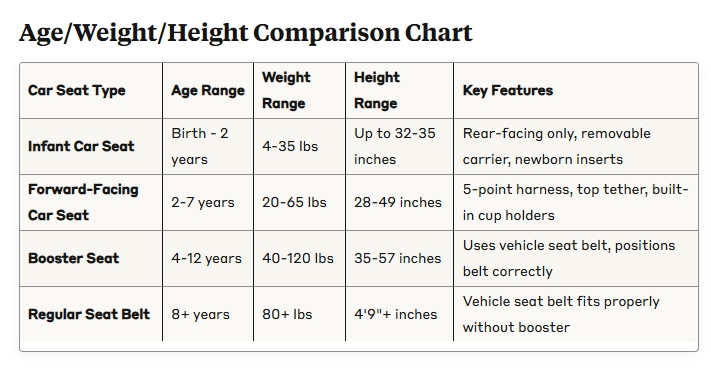
Expert Opinions About Switching to Booster Seats
Pediatricians emphasize taking it slow and steady when transitioning. Dr. Jane Smith, who knows a lot about child safety, advises, “Make sure your kid fits well in a booster seat before moving on. Jumping the gun can put them at risk.” Listening to the experts keeps your child safe and helps parents understand when to switch to booster seat timing is appropriate for their individual child.
The Transition Process From An Infant Seat to Booster Seat
Switching from a car seat to a booster isn’t just about how old your kid is; you also need to think about their weight, height, and how mature they are. Parents should really get to know what each type of seat requires and make sure their child fits the bill before making the change.
Also, it’s extremely important to teach kids why seat belts matter and how they keep them safe. Talking to them about car safety can make them more aware and responsible passengers, which boosts their safety on the road. These conversations also help children understand when to switch to booster seat changes happen and why following safety rules matters.
Important Reminder
If your child fails ANY of these 5 tests in the chart above, they must continue using a booster seat. When to switch to booster seat decisions should never compromise these safety standards.
Understanding Booster Seat Readiness
Most children are ready for a booster around age 4 or 5. However, age alone isn’t enough. Look for signs that your child is growing and developing correctly for a booster seat.
These signs include whether your child has outgrown their forward-facing car seat and whether they can sit comfortably with their back against the vehicle seat and their knees bent over the edge of the seat. Understanding when to switch to booster seat indicators helps parents make this critical safety decision with confidence.
Additionally, it’s important to ensure that the vehicle’s seat belt fits properly across your child’s shoulder and lap.
Factors Influencing Booster Seat Transition
When you’re thinking about moving your kid to a booster seat, it’s not just about how big they’ve gotten. You also need to think about how mature they are. Kids should get why wearing a seat belt is important and be able to sit properly for the whole trip.
This level of maturity usually comes around the same time they’re physically ready, but every kid is unique. Knowing when to switch to booster seat requirements and watching how your child acts in the car can give you a good idea if they’re ready for this important safety move.
7 Essential Signs When to Switch to Booster Seat:
1. Weight Requirement Met
Your child weighs at least 40 pounds (check your specific car seat’s manual as some require 30-35 pounds). This is the minimum safety threshold for booster seat use.
2. Height Limit Exceeded
Your child’s shoulders are at or above the top harness slots of their forward-facing car seat, or they’ve reached the seat’s maximum height limit (usually around 49 inches).
3. Age Appropriateness
Your child is at least 4 years old. While weight and height matter more than age, developmental readiness typically aligns with this age range.
4. Maturity Level Achieved
Your child can sit still for the entire car ride, understands safety rules, and won’t unbuckle their seat belt or lean out of position during travel.
5. Proper Seat Belt Fit
When seated in a booster, the vehicle’s seat belt sits correctly across your child’s shoulder and chest (not neck) and low across their hips (not stomach).
6. Outgrown Current Seat
Your child has exceeded the weight or height limits of their current forward-facing car seat with harness system, making continued use unsafe.
7. Legal Requirements Met
Your child meets your state’s minimum requirements for booster seat use. Laws vary by state, so check local regulations to ensure compliance.
Remember: When to switch to booster seat decisions should be based on meeting ALL applicable requirements, not just one or two signs. Safety should always be the top priority over convenience or peer pressure.
Powerhaus Motors – Your Guide for Everything Automotive
How to Transition Safely to a Booster Seat
1. Preparing the Child
Chat with your kid about staying safe and why the new seat is a big deal. Use easy words and make it a fun talk. Kids pick things up best when they get it and feel comfy. Explaining when to switch to booster seat changes happen can help reduce any anxiety about the transition.
2. Proper Installation and Fit
Make sure to check out the manufacturer’s instructions to get the booster seat set up right. Adjust the seat and the seat belt so the lap belt sits snugly across the hips and the shoulder belt goes across the chest. Double-check that the seat is stable and secure.
3. Monitoring and Adjusting the Car Seat
Keep an eye on how the seat belt fits as your child grows. If it doesn’t fit right anymore, it’s time to reassess. Make sure they’re comfortable and positioned properly.
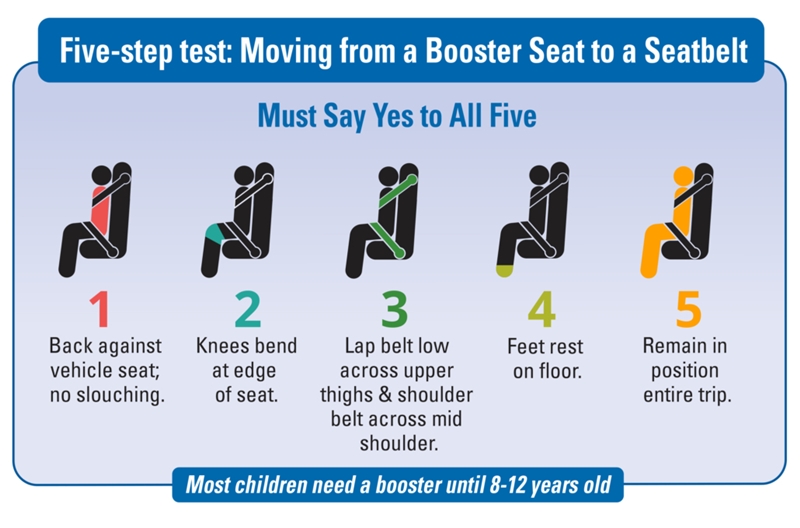
Tips for Parents and Caregivers
- Keep track of your kid’s weight and height regularly, and jot down the details.
- Make sure to follow the manufacturer’s instructions when setting things up.
- Schedule a car seat check with a certified technician to feel confident it’s all good.
- Set a good example by always buckling up yourself.
- Don’t rush when making changes; taking your time helps avoid safety problems and ensures you know when to switch to booster seat decisions are appropriate.

FAQ: When to Switch to Booster Seat
-
When to switch to booster seat if my child meets weight but not height requirements?
Never transition based on just one factor. Your child must meet the manufacturer’s weight AND height requirements before moving to a booster seat. Understanding when to switch to booster seat guidelines means considering all safety factors together, not individually.
-
My 3-year-old is tall for their age. When to switch to booster seat in this situation?
Size isn’t everything when determining when to switch to booster seat timing. Your child also needs the maturity to sit properly throughout the entire car ride. Most 3-year-olds aren’t developmentally ready for a booster seat, regardless of their size.
-
Can I use a booster seat in any vehicle?
Most booster seats work in vehicles with standard 3-point seat belts. However, always check your vehicle’s manual and the booster seat instructions. Some older vehicles or specialty seating positions may not be compatible with booster seats.
-
When to switch to booster seat if my child resists the change?
If your child has outgrown their current seat, the transition must happen for safety reasons. Try involving them in choosing the new seat, explaining the “big kid” benefits, and making the first few rides special. When to switch to booster seat timing shouldn’t be delayed due to resistance.
-
How long should my child stay in a booster seat?
Children should remain in booster seats until they can pass the “5-point test”: feet flat on floor, back against vehicle seat, seat belt across shoulder (not neck), lap belt across hips (not stomach), and knees bend naturally over seat edge. This typically happens between ages 8-12.
-
What’s the difference between high-back and backless booster seats?
High-back boosters provide head and neck support and are better for vehicles without headrests. Backless boosters are more portable and work well in vehicles with proper headrests. Both position the seat belt correctly when used properly.
-
When to switch to booster seat after a car accident?
If your child’s car seat was involved in a moderate to severe accident, it should be replaced immediately. For minor accidents, check with the manufacturer’s guidelines. When to switch to booster seat decisions may need to be reconsidered if the current seat was damaged.
-
Can my child sleep safely in a booster seat during long trips?
Unlike car seats with full harness systems, booster seats rely on the vehicle’s seat belt. If your child tends to sleep and slouch during car rides, they may not be mature enough for a booster seat yet, regardless of their size.
-
Are expensive booster seats safer than budget options?
All booster seats sold in the US must meet the same federal safety standards. Higher-priced seats often offer additional comfort features, easier installation, or longer usability, but they’re not necessarily safer. Focus on proper fit and installation rather than price.
-
When to switch to booster seat if my child is small for their age?
Never rush the transition. If your child hasn’t reached the minimum requirements for a booster seat, keep them in their current seat longer. When to switch to booster seat timing should be based on meeting safety requirements, not peer pressure or convenience.
Need a mechanic? Find one on the Mobile Mechanic Directory
Final Thoughts About Switching to a Booster Seat
Making sure your kid switches to a booster seat at the right time is super important for their safety. Keep an eye on how they’re growing, stick to the legal rules, and make sure the seat belt fits just right.
Understanding when to switch to booster seat timing helps parents make informed decisions about their child’s car safety. When your child reaches the right weight, height, and developmental stages, moving them to a booster seat helps keep them safe and sound. Stay informed, stay alert, and always put your child’s safety first on every car ride. Parents who learn when to switch to booster seat guidelines are better equipped to protect their children throughout their growth journey.

